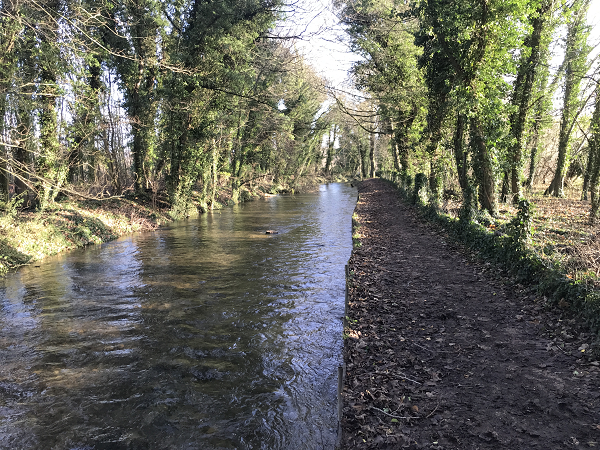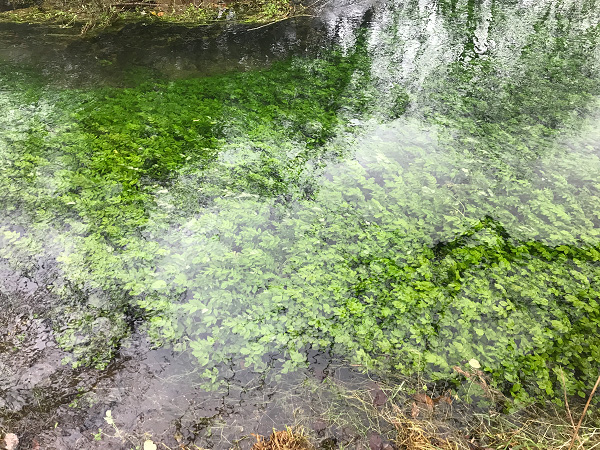
In the midst of these extraordinary times, government advice is clear: you can exercise once per day and only with members of your household. Practically that means the Thames Path is closed to most as non-essential travel is prohibited. Only those fortunate to live close to the river will be able to visit.
There is little point in publishing news concerning events on and around the Thames Path. Nor are weather warnings, rail strikes or flood alerts of any use. Instead we intend to focus our articles on insights and information about the Thames Path.
We have, in the past, written such articles that you may be interested to see. These include:
Football grounds on the River Thames
Today we turn our attention to how clean the Thames really is.
You can walk the Thames. But can you swim it? David Walliams did in 2011 when he swam from Lechlade to Westminster for Sport Relief. But, soon after setting off, he went down with “Thames tummy” leaving him with a high temperature.
The charity, London Waterkeeper, lobbies for action to keep London’s waters clean. They are calling for a swimmable Thames. As examples of other cities, they cite Munich’s River Isar, which is now clean enough to swim and play in, and Copenhagen which has had city beaches and harbour swimming baths for 17 years.
They also call for more transparency around the legal discharge of untreated sewage by the water companies.
The Thames is considered to be the cleanest river in the world that flows through a major city. The Thames is home to 125 species of fish and more than 400 invertebrates. This is in spite of the fact that raw sewage is routinely pumped into the river during heavy rains. The London sewage system is around 150 years old and was designed to mix surface rainwater with sewage. When the system overfills, excess sewage is therefore pumped into the Thames through 57 sewer overflows. An estimated 39 million tonnes of mixed sewage (raw and rainwater) is pumped into the river every year during adverse weather conditions. This information is not reported in real time, which is what London Waterkeeper is campaigning for.

A 16 mile super-sewer, The Thames Tideway Tunnel, is currently being constructed. There are 24 construction sites from Acton in West Lndon through to Beckton on the left bank past the Thames Barrier. You will pass some of the construction sites whilst walking the Thames Path where there are often diversions in place. The cost is an eye-watering £5bn and is due for delivery in 2024.
So, is the Thames clean enough to swim in? For much of it, we just don’t know. Although the Environment Agency monitors the quality of bathing waters, these are largely confined to beaches as the map here clearly shows. The only places that bathing water is tested close to the Thames Path is one of the lakes in the Cotswold Water Park (which the Path does not pass!) and the Serpentine Lake in Hyde Park, London.
Campaigners in Yorkshire have applied for the River Wharfe to be granted bathing water status, which will force Yorkshire Water and the Environment Agency to clean up the river, dramatically reduce or stop sewage discharges, and regularly monitor the water quality.
We should be proud of our river. But we can perhaps do better. Hopefully the Tideway Project will help.

Ready to book?
| Cookie | Duration | Description |
|---|---|---|
| cookielawinfo-checkbox-analytics | 11 months | This cookie is set by GDPR Cookie Consent plugin. The cookie is used to store the user consent for the cookies in the category "Analytics". |
| cookielawinfo-checkbox-functional | 11 months | The cookie is set by GDPR cookie consent to record the user consent for the cookies in the category "Functional". |
| cookielawinfo-checkbox-necessary | 11 months | This cookie is set by GDPR Cookie Consent plugin. The cookies is used to store the user consent for the cookies in the category "Necessary". |
| cookielawinfo-checkbox-others | 11 months | This cookie is set by GDPR Cookie Consent plugin. The cookie is used to store the user consent for the cookies in the category "Other. |
| cookielawinfo-checkbox-performance | 11 months | This cookie is set by GDPR Cookie Consent plugin. The cookie is used to store the user consent for the cookies in the category "Performance". |
| viewed_cookie_policy | 11 months | The cookie is set by the GDPR Cookie Consent plugin and is used to store whether or not user has consented to the use of cookies. It does not store any personal data. |